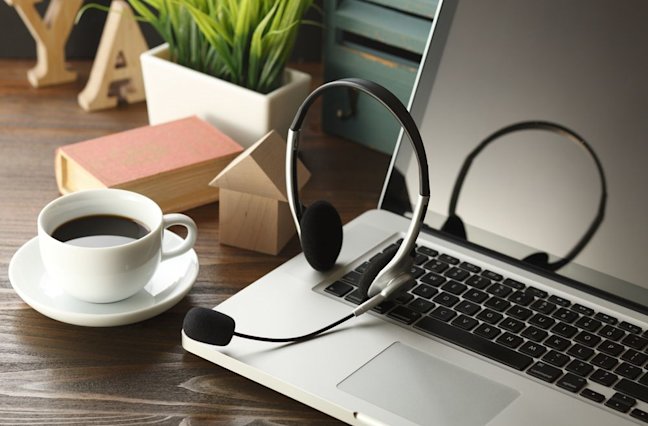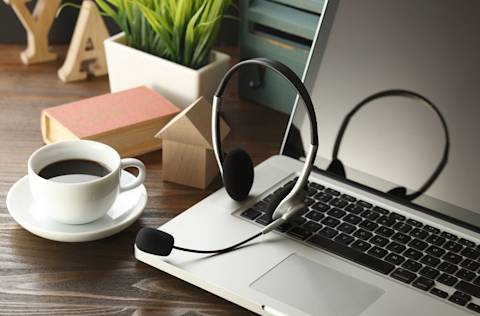Your data is your competitive moat: How conversation intelligence accelerates AI automation
Discover how domain-specific conversation intelligence fuels high-impact AI automation and transforms customer experience at scale.
Solutions
Products
Ingest omnichannel customer interactions, from audio and screens to surveys, for complete visibility and analytics.
AI virtual agents, real-time multilingual translation, and event-based customer feedback drive smarter, personalized CX initiatives.
Customers
Solutions
Products
Customers
Resources
Company
The Team at CallMiner
May 29, 2019


According to a recent survey by Contact Babel of contact center professionals, over 90% of businesses record their calls, but only 34% are analyzing them with a speech analytics solution. Even with 21% saying they were looking to implement a solution this year, this is leaving a lot of customer and agent insight data wasting away.Below are four ways that your call recordings can be used to better your agents, customers and company to contact center performance.
One of the most common uses of call recordings is for quality monitoring purposes. However, traditional quality assurance (QA) processes, some in the form of manual checklists, only manage to use about 1-2% of agents’ monthly calls for that purpose. This means that all the wealth of data hidden in those recordings remains overlooked, making it virtually impossible for managers to get a true sense of the quality of performance of each individual agent.
To utilize your call recordings in the most efficient way you can, use tools such as speech analytics to automatically analyse and score 100% of recordings. This will enable you to deliver automated performance feedback to agents and supervisors, and necessary insights to manage any quality assurance processes more efficiently. By utilizing recordings in this way, companies can categorize their calls and search for trends in customer behavior (e.g. uncovering the root cause of customer complaints and eliminate the source), ultimately raising the quality of service provided to customers. In my opinion, if call recordings are used for QA purposes then it is a very high risk strategy to base QA decisions on anything less that 100% of calls
Your call recordings can be used to identify customer trends or sales opportunities. To perform trend analysis, you need to be able to analyse and score 100% of your call recordings. You can then identify and correlate desired outcomes of the calls, such as driving successful sales, with certain agent behaviors, skills or language used. Therefore, if you analyse your call recordings with speech analytics you can identify different ways of making a sale and select the one with the best outcome to create an optimum path. Agents testing this path can be scored against adherence to the desired script or their ability to identify language which indicates a willingness to buy
Failing to comply with regulations can be incredibly costly – both to your company’s bottom line and reputation. Call recordings can help drive the right kind of compliant behavior. But manual sampling of recorded calls provides little to no prevention of non-compliant behavior or protection against litigation. This presents a huge risk to the call center. Instead you should consider utilizing your call recordings in a way that will enhance your continuous monitoring capabilities by tracking every conversation to ensure that the right compliance procedures are in place.
Speech analytics or interaction analytics across channels can help by analyzing and scoring every single agent interaction, either during or after the call, as opposed to traditional, random compliance checks. The result is lower cost and effort in call center quality monitoring. This can drive better compliance adherence, streamline auditing and, ultimately, reduce/eliminate possible fines or lawsuits for non-compliance
Call recordings contain a huge amount of information that can be incredibly useful for coaching and training purposes. However, this insight is often not fully utilized as the manual process of listening to agent calls is very time consuming. This manual approach is also not fair because agent performance is being assessed based on a very thin slice of their calls. As a result, it is often not possible to arrive at a fair assessment of an agent’s coaching and training needs.
To overcome these weaknesses and use your call recordings to drive smarter training and coaching, you can use call analytics to identify individual coaching and training needs. This analysis can also provide agents with actionable information they can use to improve their own performance and quality scores. Because the insight is based on 100% of their calls, it will produce much fairer performance feedback. As a result, agents are more likely to embrace the coaching and training because they can see how it will help their performance. This positive mindset can help to create a culture of self-improvement and continuous improvement.


CallMiner is the global leader in AI-powered conversation intelligence and customer experience (CX) automation. Our platform captures and analyzes 100% of omnichannel customer interactions delivering the insights organizations need to improve CX, enhance agent performance, and drive automation at scale. By combining advanced AI, industry-leading analytics, and real-time conversation intelligence, we empower organizations to uncover customer needs, optimize processes, and automate workflows and interactions. The result: higher customer satisfaction, reduced operational costs, and faster, data-driven decisions. Trusted by leading brands in technology, media & telecom, retail, manufacturing, financial services, healthcare, and travel & hospitality, we help organizations transform customer insights into action.